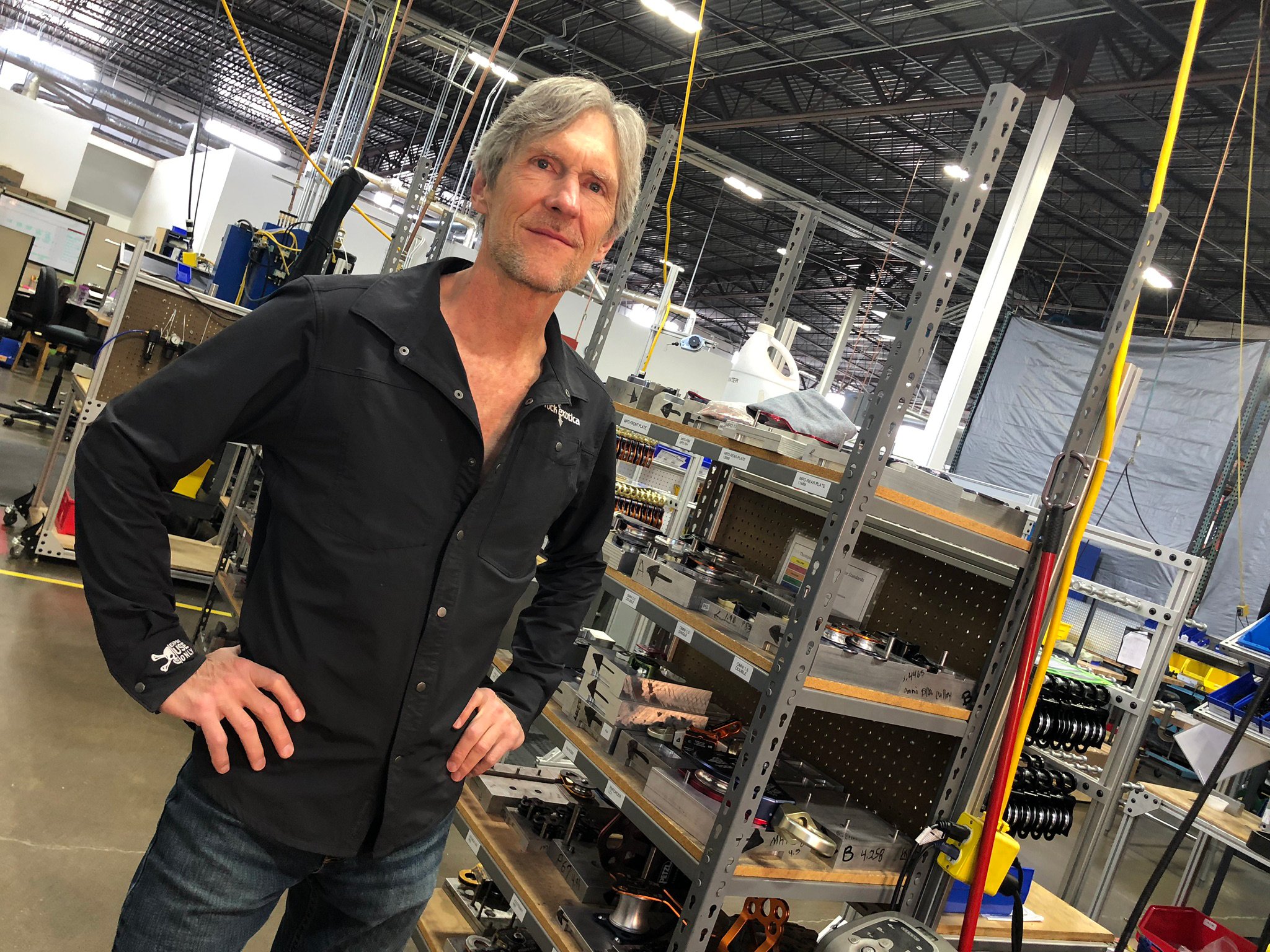For those of you who have had to drastically change your travel plans – which pretty much includes 90% of us – and if those travel plans were to attend rescue training, we hope that you have had a chance to read our recent blog article Roco Tips for Maintaining Rescue Skills in the Midst of Coronavirus.
If you have had to cancel or postpone your planned training, chances are there are funds that were earmarked for your rescue team that may be diverted to another department or otherwise be lost if you don’t use them before the end of your fiscal year. Maybe those same funds can be used to support your rescue team in other ways.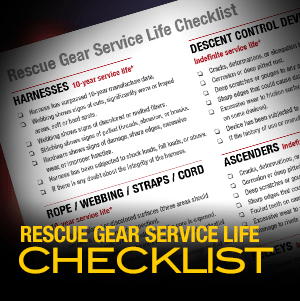
If you use your rescue equipment regularly for training, to rig for potential rescues, or during live rescues, chances are, that equipment has seen some significant wear. Nylon gear is especially prone to degradation and is a likely candidate for replacement. In addition to the ASTM F1740-96 ten-year service life of nylon rescue gear, keep in mind that several manufacturers still place a shorter service life on nylon gear than the ASTM standard.
In addition to the service life of your gear, now is a great time to do a thorough inspection of ALL your equipment. Become familiar with the inspection criteria that the equipment manufacturer may have provided. Some hardware items include built in wear indicators. Learn which items have them, and inspect those items to see if they are still serviceable. For all your gear, check for proper function, obvious damage, indication of shock loading or loading beyond the rated working load, and history of the equipment, if known.
Equipment Resources
As always, if you have questions or want to discuss if a particular piece of gear is right for you or our team, feel free to call us at 1-800-647-7626.

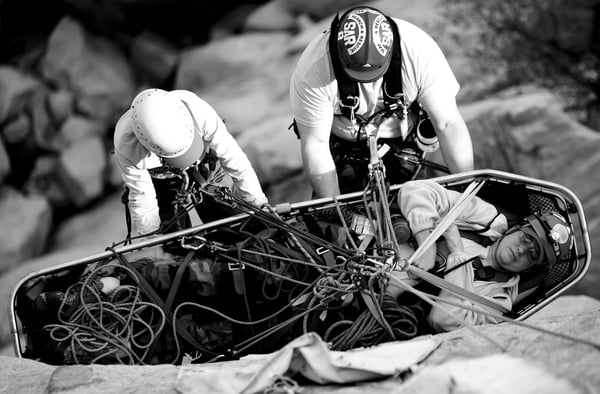
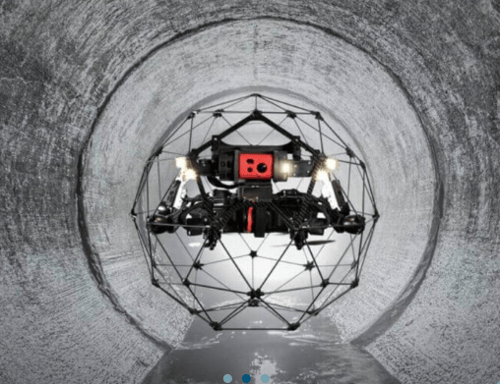

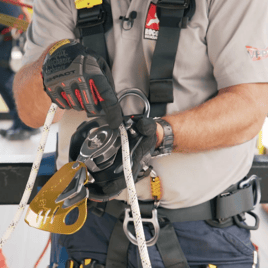 will be a fixture in a rope rescuer’s toolkit. These are critical components of a two-tension system because they provide the three primary functions two-tensioned systems require – friction control, belay, and haul. By providing two mirrored tensioned systems during a lower, the forces on either of the systems are essentially cut in half. This greatly reduces stress on the system and is more easily managed by the operator working with heavier rescue loads.
will be a fixture in a rope rescuer’s toolkit. These are critical components of a two-tension system because they provide the three primary functions two-tensioned systems require – friction control, belay, and haul. By providing two mirrored tensioned systems during a lower, the forces on either of the systems are essentially cut in half. This greatly reduces stress on the system and is more easily managed by the operator working with heavier rescue loads. 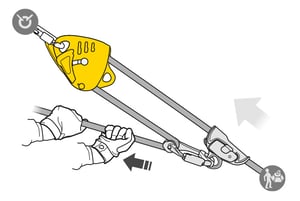 Also, as mentioned previously, using a mirrored 3:1 or 5:1 Z-rig through a Maestro or other similar device during hauling operations will double the mechanical advantage compared to using a single haul system. Applying two 3:1 mirrored MAs results in a 6:1 total MA. This can reduce the manpower required for the haul team, which is beneficial for a variety of reasons.
Also, as mentioned previously, using a mirrored 3:1 or 5:1 Z-rig through a Maestro or other similar device during hauling operations will double the mechanical advantage compared to using a single haul system. Applying two 3:1 mirrored MAs results in a 6:1 total MA. This can reduce the manpower required for the haul team, which is beneficial for a variety of reasons.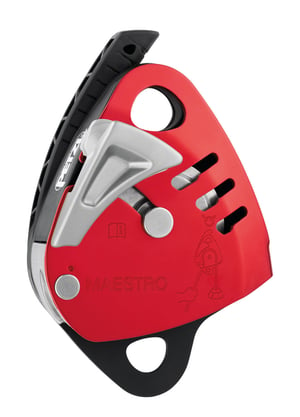 in late January 2020. We’ve been testing it out for a few months and wanted to share our findings. We think our readers will find this particularly relevant since the Maestro is designed specifically for technical rescue.
in late January 2020. We’ve been testing it out for a few months and wanted to share our findings. We think our readers will find this particularly relevant since the Maestro is designed specifically for technical rescue.
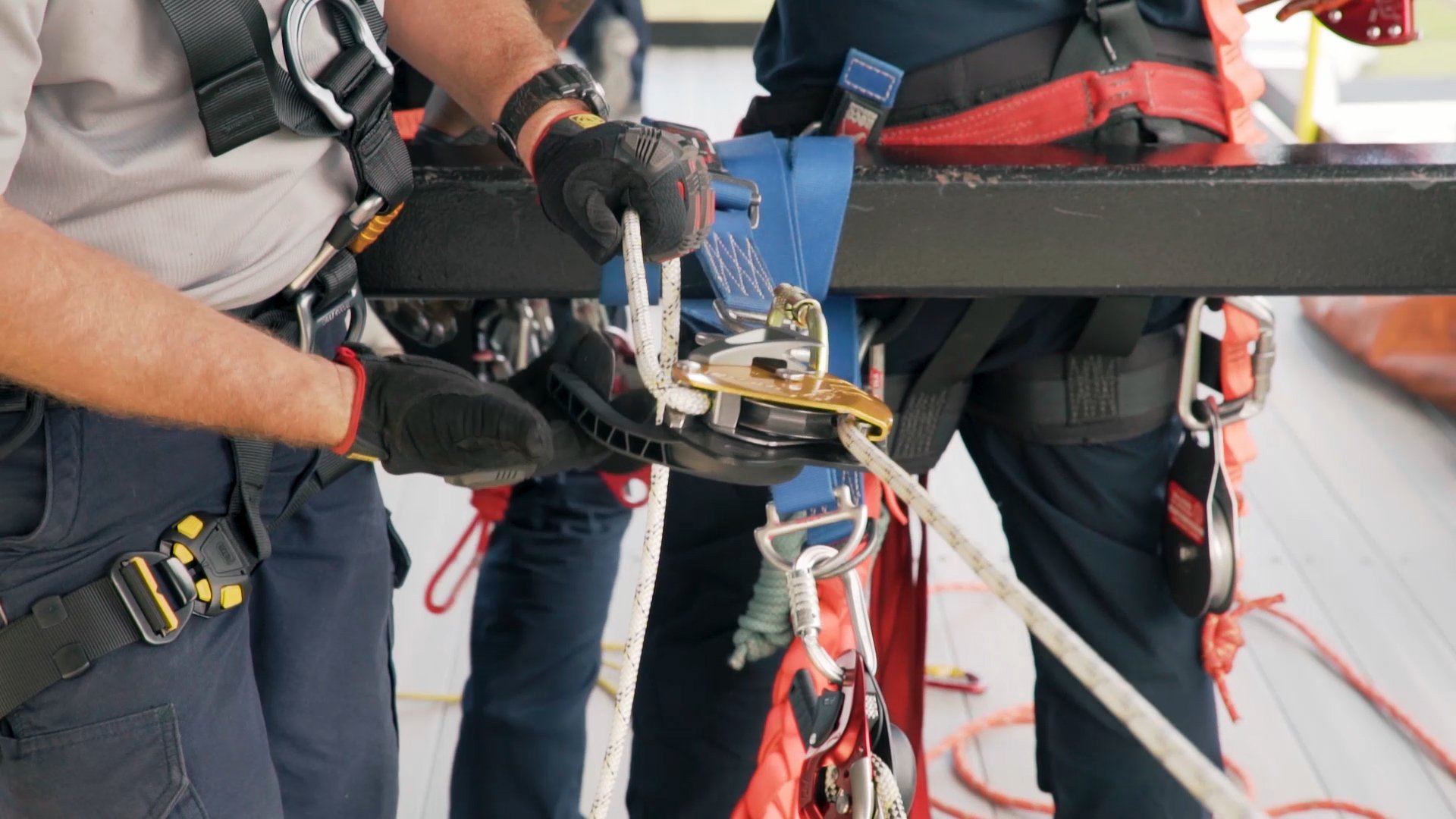 The Maestro transitions from lowering to hauling very nicely. We like that it gives the user an auditory cue – it clicks in haul mode as the uni-directional pulley sheave moves with the rope. It’s easy to set up a 3:1 z-rig using a pulley and a rope grab like the Petzl Rescucender. This is where the Maestro really shines, thanks to the efficiency characteristics of its design. Its large-diameter sheave coupled with sealed ball bearings only allow the pulley to rotate in one direction, creating a progress-capture system that minimizes loss of haul-gains. As the user hauls the load, the Maestro’s auto-lock feature locks in the progress made, and the user can then extend the rope grab back out and continue hauling.
The Maestro transitions from lowering to hauling very nicely. We like that it gives the user an auditory cue – it clicks in haul mode as the uni-directional pulley sheave moves with the rope. It’s easy to set up a 3:1 z-rig using a pulley and a rope grab like the Petzl Rescucender. This is where the Maestro really shines, thanks to the efficiency characteristics of its design. Its large-diameter sheave coupled with sealed ball bearings only allow the pulley to rotate in one direction, creating a progress-capture system that minimizes loss of haul-gains. As the user hauls the load, the Maestro’s auto-lock feature locks in the progress made, and the user can then extend the rope grab back out and continue hauling.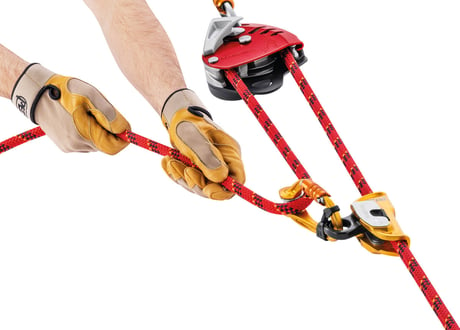
 manufacturers to innovate and come up with products that are lightweight, easy to employ, multi-functional, and most importantly, these products are appealing to the authorized person, which ultimately encourages them to use it.
manufacturers to innovate and come up with products that are lightweight, easy to employ, multi-functional, and most importantly, these products are appealing to the authorized person, which ultimately encourages them to use it.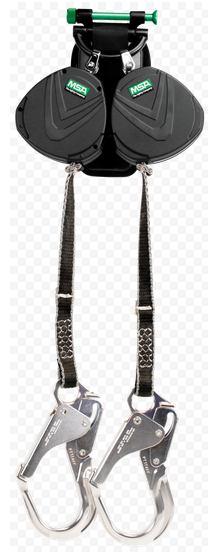
 on the same
on the same 



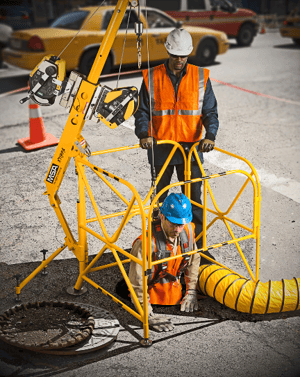
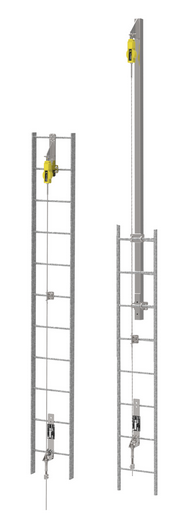
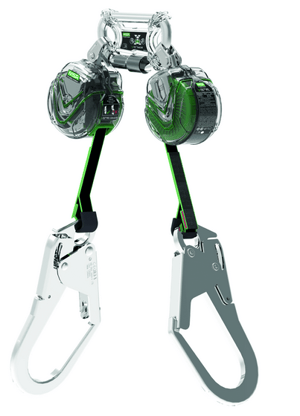

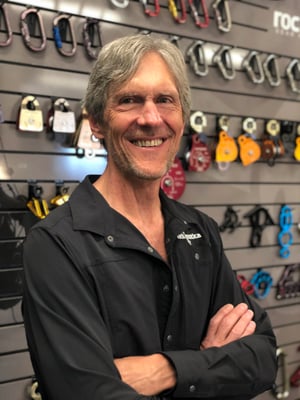 My initial idea for this interview was to discuss how a piece of rescue equipment goes from idea to design and manufacturing, and finally into our gear bags. However, a funny thing happened during the course of this chat. I realized that this story is about so much more than designing and manufacturing equipment.
My initial idea for this interview was to discuss how a piece of rescue equipment goes from idea to design and manufacturing, and finally into our gear bags. However, a funny thing happened during the course of this chat. I realized that this story is about so much more than designing and manufacturing equipment. 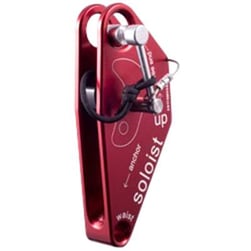 It was after the
It was after the 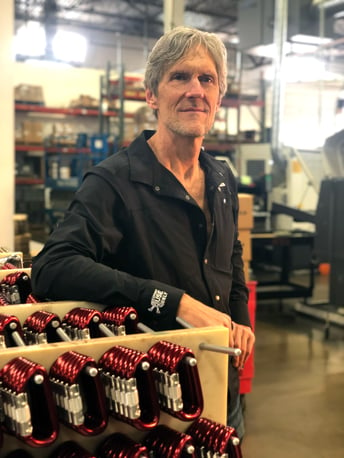 make the best carabiners in the world, and I knew that the key lock design was really good, so we licensed that design for our gate interface. Of course, it is more difficult to make a carabiner that has that interface opposed to more traditional claw or pin latch gates, but once we bought a CNC machining center, we were able to produce them much more efficiently with very high quality for the tolerances required. I made a feeder that would feed the blanks in automatically and clamp the blank. We were able to optimize the strength with the exact clearances so the gate wouldn’t drag on the frame and all kinds of technical things so we ended up with the performance and strength we wanted. We made everything in-house - the frame, the gates, and the sleeves - so we were able to get everything right so that it synchronizes correctly and the sleeve closes when you want it to but not before. This would have been impossible to do if we outsourced the various components from other sources. Because we made everything ourselves, I could change something by 5/1000 of an inch on the fly to really fine-tune it.
make the best carabiners in the world, and I knew that the key lock design was really good, so we licensed that design for our gate interface. Of course, it is more difficult to make a carabiner that has that interface opposed to more traditional claw or pin latch gates, but once we bought a CNC machining center, we were able to produce them much more efficiently with very high quality for the tolerances required. I made a feeder that would feed the blanks in automatically and clamp the blank. We were able to optimize the strength with the exact clearances so the gate wouldn’t drag on the frame and all kinds of technical things so we ended up with the performance and strength we wanted. We made everything in-house - the frame, the gates, and the sleeves - so we were able to get everything right so that it synchronizes correctly and the sleeve closes when you want it to but not before. This would have been impossible to do if we outsourced the various components from other sources. Because we made everything ourselves, I could change something by 5/1000 of an inch on the fly to really fine-tune it. 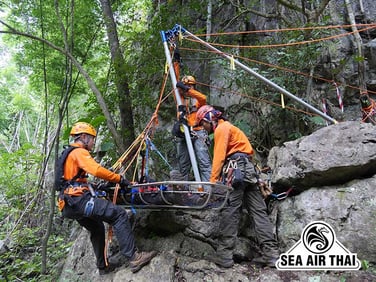 RT: Fantastically! I appreciated the things I learned working with
RT: Fantastically! I appreciated the things I learned working with 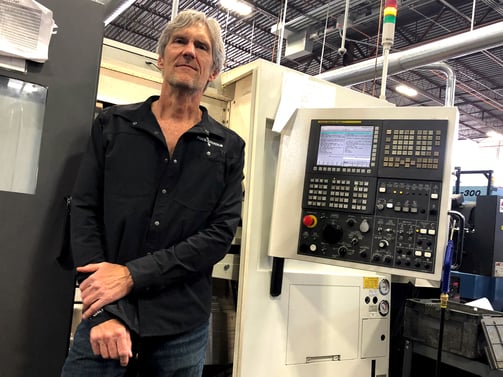
 swivels with pulleys but I thought it would be nice to save that extra length of a carabiner to connect the pulley to the swivel. It was a really fun design because you had to forget about normal pulley design. I became obsessed with designing it and would wake up in the middle of the night with an idea for it. It required that we machine a body that housed the axle, and the button to release the side plate, and a nice thick section to attach the swivel to. It was really fun to design and was perfect for our new 4-axis machines. It became a terrific success and that generated different sizes of the pulley. We now have one with a four-inch sheave, which has over a 30,000-pound breaking strength and is used a lot in material handling. I’m really proud of that product because it is totally different and it has revolutionized the way people are using pulleys.
swivels with pulleys but I thought it would be nice to save that extra length of a carabiner to connect the pulley to the swivel. It was a really fun design because you had to forget about normal pulley design. I became obsessed with designing it and would wake up in the middle of the night with an idea for it. It required that we machine a body that housed the axle, and the button to release the side plate, and a nice thick section to attach the swivel to. It was really fun to design and was perfect for our new 4-axis machines. It became a terrific success and that generated different sizes of the pulley. We now have one with a four-inch sheave, which has over a 30,000-pound breaking strength and is used a lot in material handling. I’m really proud of that product because it is totally different and it has revolutionized the way people are using pulleys. 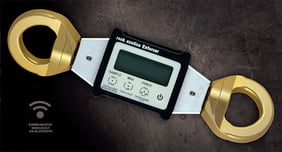 RT: That’s a great question. I would never say that innovation is at
RT: That’s a great question. I would never say that innovation is at 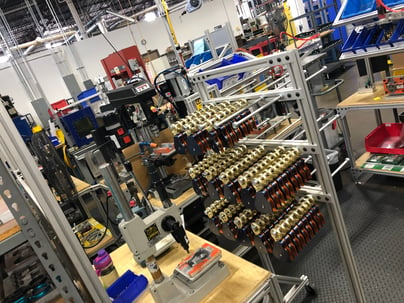 PF: I know we will always have young students that are very strong in math and the sciences, but I feel there is still a huge need to get out and learn about levers, ramps and other tools and such in the physical world.
PF: I know we will always have young students that are very strong in math and the sciences, but I feel there is still a huge need to get out and learn about levers, ramps and other tools and such in the physical world. 